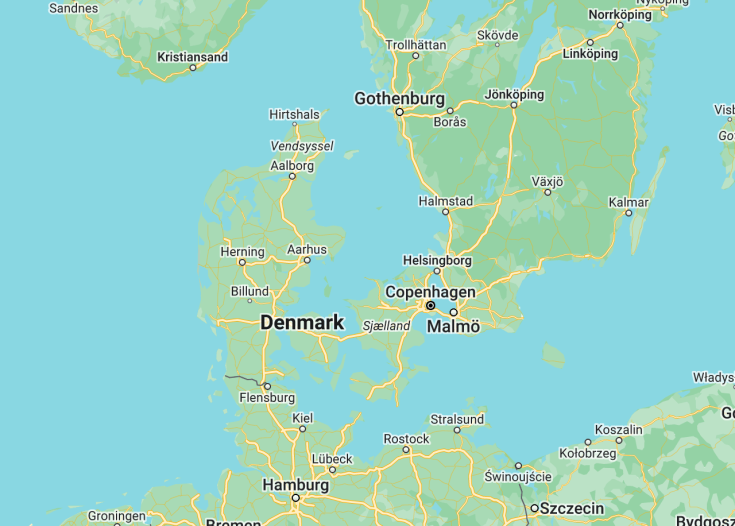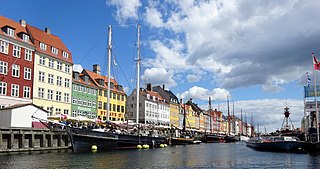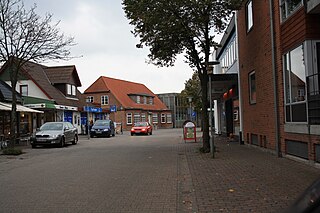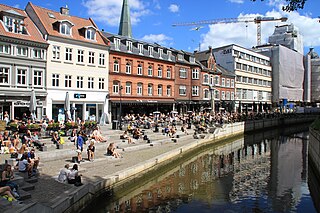Set in the heart of Scandinavia, Denmark seamlessly marries its rich Viking legacy with cutting-edge design and sustainable innovation. Visitors are treated to a blend of historic castles, contemporary architecture, and sprawling green landscapes. Add to this mix the vibrant street life, deep-rooted folklore, and a globally-acclaimed culinary scene, and you have a destination that offers a multidimensional European experience.
Consider exploring Copenhagen by bicycle. It’s not just sustainable but allows a closer look at the city’s architectural marvels and hidden gems.
Don’t miss out on the iconic Danish smørrebrød. These open-faced delicacies offer a flavorful insight into the country’s culinary traditions.
Denmark: A Scandinavian Gem
| Capital | Copenhagen |
| Time in Denmark | GMT+1 |
| Language spoken | Danish |
| Population | 5,805,000 (World Bank, 2020) |
| Religion | Evangelical Lutheran Church of Denmark (74.8%) Roman Catholicism (less than 1%) Islam (less than 1%) Others (24.2%) |
| Currency | Danish Krone (DKK) |
| Airports | Copenhagen Airport Aarhus Airport Billund Airport |
Denmark, a country rooted deep in history, stretches across the Jutland Peninsula and an archipelago of 443 named islands. This nation has witnessed the saga of Vikings embarking on expeditions, the rise and fall of monarchies, and the evolution of a modern welfare state. Its significance in world history is multifaceted, from being the homeland of the seafaring Vikings in the early medieval period to its influential role in European politics, arts, and sciences in more recent centuries. Denmark’s progressive strides in sustainability, design, and innovation have been equally notable. Over the years, this nation has produced world-renowned personalities like Hans Christian Andersen, whose fairy tales have enchanted generations, and Niels Bohr, a key figure in the development of atomic theory. The very essence of Denmark is imbued with a unique blend of historical gravitas, cultural richness, and a forward-looking spirit, making it an unmissable destination for those seeking an in-depth European experience.
Where is Denmark located?
Denmark is situated in Northern Europe, occupying the Jutland Peninsula and an archipelago of islands. It lies southwest of Sweden, south of Norway, and bordered to the south by Germany.
What is Denmark famous for?
Denmark is renowned for its Viking heritage, groundbreaking architecture and design, sustainable initiatives, and a culinary scene highlighted by the iconic Danish pastry and smørrebrød.
History
The history of Denmark spans thousands of years, from the earliest settlements to the present day. The land that is now Denmark has been inhabited since the Paleolithic era, with evidence of human presence dating back to around 12,500 BC. Over the centuries, the region has been shaped by various tribes, kingdoms, and empires.
(12,500 BC – 700 AD) Prehistoric and Viking Era
During the prehistoric era, Denmark was primarily inhabited by Celtic and Germanic tribes. The Vikings, who were seafaring warriors and traders, emerged during the Viking Age (800-1050 AD) and played a significant role in shaping the region’s history. They conducted raids, established trade routes, and eventually settled in various parts of Europe, including England and Ireland.
(700 AD – 1397) Viking Age and Medieval Denmark
In the 8th century, Charlemagne brought Christianity to the Danes, bringing an end to the Viking Age. The kingdom of Denmark was officially established in the 10th century under the rule of Harald Bluetooth. In the 11th century, Denmark experienced its first period of significant expansion under King Canute the Great, with the kingdom encompassing parts of present-day Denmark, Norway, Sweden, and England.
(1397 – 1814) Kalmar Union and Absolute Monarchy
In 1397, Denmark became part of the Kalmar Union, which united Denmark, Norway, and Sweden under a single monarch. This union lasted until 1523 when Sweden gained independence. Denmark went through a period of absolutism in the 17th and 18th centuries under the reign of King Christian IV. The country experienced territorial losses, most notably in the aftermath of the Napoleonic Wars.
(1814 – 1905) Constitutional Monarchy and Modernization
In 1814, Denmark was forced to cede Norway to Sweden. The Danish people demanded political reforms, leading to the adoption of a constitution in 1849 and the establishment of a constitutional monarchy. Denmark underwent significant modernization during the 19th century, with the development of industries, infrastructure, and social reforms.
(1905 – Present) World Wars and Welfare State
Denmark remained neutral during World War I but experienced significant challenges during World War II, when it was occupied by Nazi Germany from 1940 to 1945. After the war, Denmark embarked on a path of social democracy and established a welfare state, providing free healthcare, education, and other social benefits. Denmark is known for its strong welfare system and high standard of living.
Visit Denmark
Attractions and Activities in Denmark
Denmark, a Scandinavian gem, is replete with attractions for visitors of all ages and interests. The capital, Copenhagen, offers the picturesque Nyhavn harbor, the historical Rosenborg Castle, and the modernist marvel of the Royal Danish Opera House. Art enthusiasts should not miss the Louisiana Museum of Modern Art, while nature lovers can enjoy the serene beaches of Bornholm.
- Tivoli Gardens – One of the world’s oldest amusement parks.
- The Little Mermaid statue – An iconic symbol of Copenhagen.
- Aarhus – Home to the ARoS art museum and a vibrant cultural scene.
- Ribe – Denmark’s oldest town with medieval charm.
Festivals and Celebrations in Denmark
Denmark boasts an array of events throughout the year. In June, the Midsummer’s Eve celebration, known as Sankt Hans Aften, lights up the night with bonfires and traditional songs. Copenhagen hosts the Jazz Festival in July, which sees performances from international and local artists. Meanwhile, the Aarhus Festival in September showcases art, music, and theatre in Denmark’s cultural heartland.
Best time to visit Denmark
The ideal time to visit Denmark is during the summer months from June to August. The weather is pleasantly warm, and days are long, making it perfect for sightseeing and outdoor activities. However, those who prefer fewer crowds might opt for the shoulder seasons of spring (April to June) or early autumn (September to October) when the weather remains mild.
Is Denmark worth visiting?
Without a doubt, Denmark is worth visiting. Its harmonious blend of history, modern design, and natural beauty offers an enriching experience for travelers. However, like all destinations, it’s essential to align your interests with what the country provides. For lovers of culture, design, history, and nature, Denmark is a treasure trove waiting to be explored. While there may be other destinations with similar allure, the Danish charm is uniquely captivating.
Common questions
What are the must-see attractions in Denmark?
- Tivoli Gardens: This historic amusement park in Copenhagen is known for its beautiful gardens, thrilling rides, and live entertainment.
- Nyhavn: A picturesque waterfront district in Copenhagen with colorful 17th-century townhouses, bustling restaurants, and lively atmosphere.
- The Little Mermaid: A famous bronze statue inspired by Hans Christian Andersen’s fairy tale, located on the waterfront in Copenhagen.
- Kronborg Castle: Situated in Helsingør, this Renaissance castle is known as the setting for Shakespeare’s play “Hamlet.”
- Legoland Billund: A popular theme park that showcases impressive LEGO sculptures and offers exciting rides and activities for all ages.
What are some popular Danish dishes to try?
- Smørrebrød: Open-faced sandwiches with various toppings like smoked salmon, pickled herring, and Danish cheese.
- Æbleskiver: Traditional Danish pancakes usually served with powdered sugar and jam.
- Flæskesteg: Roast pork with crispy skin, often served with red cabbage and potatoes.
- Frikadeller: Danish meatballs made with ground pork and spices, usually served with potatoes and gravy.
- Rødgrød med fløde: A traditional Danish dessert made from red berries, sugar, and cream.
What is the best time to visit Denmark?
- Spring (March to May): The weather starts to warm up, and the parks and gardens bloom with colorful flowers.
- Summer (June to August): The peak tourist season with longer days, pleasant weather, and various cultural festivals and outdoor events.
- Autumn (September to November): The foliage changes to beautiful autumn colors, and there are fewer crowds.
- Winter (December to February): Denmark transforms into a winter wonderland with Christmas markets and the opportunity to experience hygge (cozy atmosphere).
Choose the season that suits your interests and activities the most. Keep in mind that the weather can be unpredictable, so it’s always a good idea to check the forecast before your trip.
What is the transportation system like in Denmark?
- Public transportation: Denmark has an extensive public transportation network, including trains, buses, and metros, that connect major cities and towns.
- Trains: The national railway company, DSB, operates trains that are efficient and comfortable for traveling between cities.
- Buses: Regional and local buses provide transportation to smaller towns and rural areas, complementing the train network.
- Cycling: Denmark is known for its cycling infrastructure, and many cities have bike-friendly paths and bike-sharing systems.
- Rental cars: Renting a car is also an option, especially if you want to explore the countryside or regions with less public transportation coverage.
Choose the mode of transportation that best suits your needs and preferences. Danish transportation systems are well-maintained and reliable, ensuring a smooth travel experience.
What are some cultural customs in Denmark?
- Hygge: This concept represents a cozy and comfortable atmosphere, often enjoyed with family and friends over coffee, candles, and good company.
- Dress code: Danes tend to dress casually but stylishly. It’s common to see people wearing layers and comfortable footwear.
- Punctuality: Danes value punctuality, so it’s important to arrive on time for appointments, meetings, and social events.
- Danish greetings: A handshake is the most common form of greeting in Denmark. When meeting someone, it’s polite to make eye contact and address them by their last name or title until given permission to use their first name.
- Tipping: While service charges are typically included in bills, it’s customary to round up or leave a small tip if you received good service.
Respecting and embracing these customs can enhance your cultural experience in Denmark.
What are some outdoor activities to do in Denmark?
- Cycling: Denmark has a well-developed cycling infrastructure, making it a great destination for bike rides through picturesque landscapes and charming towns.
- Walking and hiking: Explore the Danish countryside by walking or hiking through national parks, coastal trails, and scenic routes.
- Watersports: Denmark’s coastline and numerous lakes provide opportunities for kayaking, windsurfing, sailing, and fishing.
- Beaches: Denmark has beautiful sandy beaches along its coasts, perfect for relaxing, sunbathing, and swimming during the summer months.
- Wildlife spotting: Experience Denmark’s diverse wildlife by visiting nature reserves, bird sanctuaries, and seal colonies.
Whether you prefer a leisurely stroll or an adrenaline-fueled activity, Denmark has something to offer for everyone who loves the great outdoors.
What are the top Danish museums to visit?
- National Museum of Denmark: Located in Copenhagen, this museum offers a comprehensive journey through Danish history, with exhibits ranging from prehistoric times to the present.
- Louisiana Museum of Modern Art: Situated in Humlebæk, this museum showcases contemporary and modern art in a stunning seaside setting.
- The Viking Ship Museum: Located in Roskilde, this museum lets you explore the world of the Vikings through impressive reconstructed Viking ships and interactive exhibits.
- ARoS Aarhus Art Museum: A contemporary art museum in Aarhus, featuring a wide range of artworks from both local and international artists.
- Hans Christian Andersen Museum: Dedicated to the famous Danish author, this museum in Odense invites you to learn about Andersen’s life and works.
These museums offer unique insights into Danish culture, history, and art, and are well worth a visit during your time in Denmark.
What are the best shopping spots in Denmark?
- Strøget: Located in Copenhagen, Strøget is one of Europe’s longest pedestrian shopping streets, offering a wide range of luxury boutiques, high-end fashion stores, and Danish design shops.
- Magasin du Nord: This iconic department store in Copenhagen is a must-visit for fashion, beauty, and lifestyle products.
- Jægersborggade: Situated in Copenhagen’s Nørrebro neighborhood, this street is known for its independent boutiques, vintage shops, and unique local crafts.
- Østergade: A charming shopping street in Aarhus with a mix of well-known brands, local boutiques, and specialty stores.
- Aalborg Storcenter: A large shopping center in Aalborg with a wide selection of shops, including fashion, electronics, and homeware.
From high-end fashion to unique local crafts, Denmark offers diverse shopping experiences for every taste and budget.
What are the best Danish castles to visit?
- Frederiksborg Castle: Located in Hillerød, this stunning Renaissance castle houses the Museum of National History and is surrounded by beautiful gardens.
- Kronborg Castle: Situated in Helsingør, this UNESCO World Heritage Site is famous for its association with Shakespeare’s play “Hamlet” and offers guided tours and events.
- Rosenborg Castle: Found in the heart of Copenhagen, this 17th-century castle features a treasury with the Danish Crown Jewels and royal artifacts.
- Egeskov Castle: Located on the island of Funen, this well-preserved Renaissance water castle offers tours, gardens, and attractions for the whole family.
- Voergaard Castle: Situated in Dronninglund, this medieval castle showcases a combination of Renaissance and Baroque architecture, along with an extensive art collection.
Exploring these magnificent castles allows you to step back in time and immerse yourself in Denmark’s rich history.
What are the best Danish coastal towns to visit?
- Skagen: Known for its unique light, Skagen is a popular destination with beautiful beaches, art galleries, and charming yellow houses.
- Ebeltoft: This idyllic town on the Djursland peninsula boasts cobblestone streets, half-timbered houses, and the popular attraction, the Old Town Hall.
- Svendborg: Situated on the island of Funen, Svendborg features a charming harbor, narrow streets, and the opportunity to explore nearby islands.
- Ærøskøbing: Located on the island of Ærø, this well-preserved town is known for its colorful houses, cobblestone streets, and maritime history.
- Hirtshals: A coastal town in Northern Jutland, Hirtshals offers beautiful beaches, a lively harbor, and the chance to visit the North Sea Oceanarium.
These coastal towns provide a perfect combination of natural beauty and historical charm, making them ideal destinations for a leisurely exploration.
What festivals and events take place in Denmark?
- Roskilde Festival: One of Europe’s largest music festivals, featuring international artists across various genres. It takes place in Roskilde during the summer.
- Aarhus Festuge: A 10-day cultural festival held in Aarhus, showcasing music, theater performances, art exhibitions, and other cultural events.
- Copenhagen Jazz Festival: A renowned jazz festival that attracts jazz enthusiasts and world-class musicians from around the globe. It takes place in Copenhagen every July.
- Skagen Festival: A traditional folk music festival held in Skagen, featuring performances by Danish and international artists.
- Tønder Festival: A significant folk music festival held in Tønder, bringing together musicians and folk music lovers from Denmark and abroad.
These cultural festivals and events showcase Denmark’s diverse art scene and offer a unique opportunity to immerse yourself in the local culture.

















